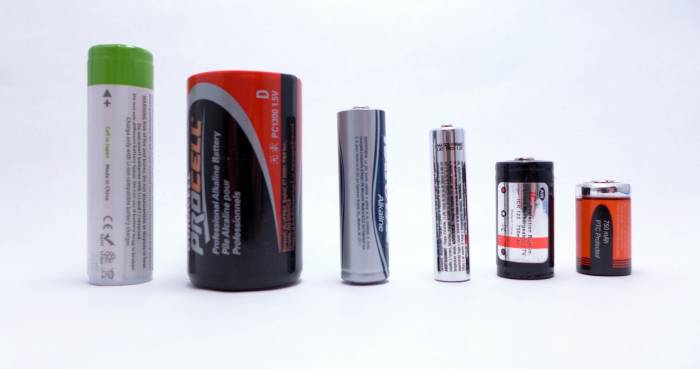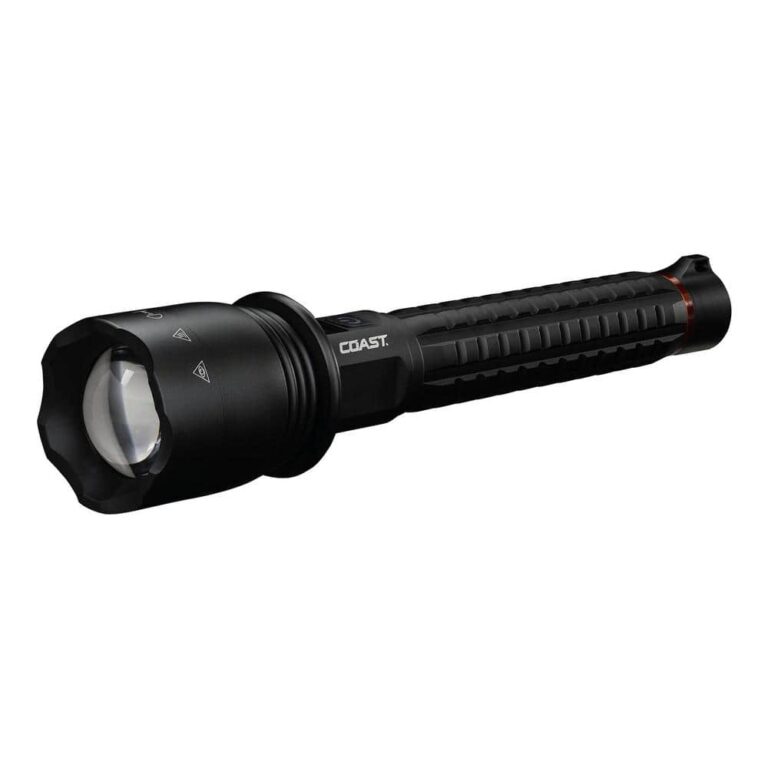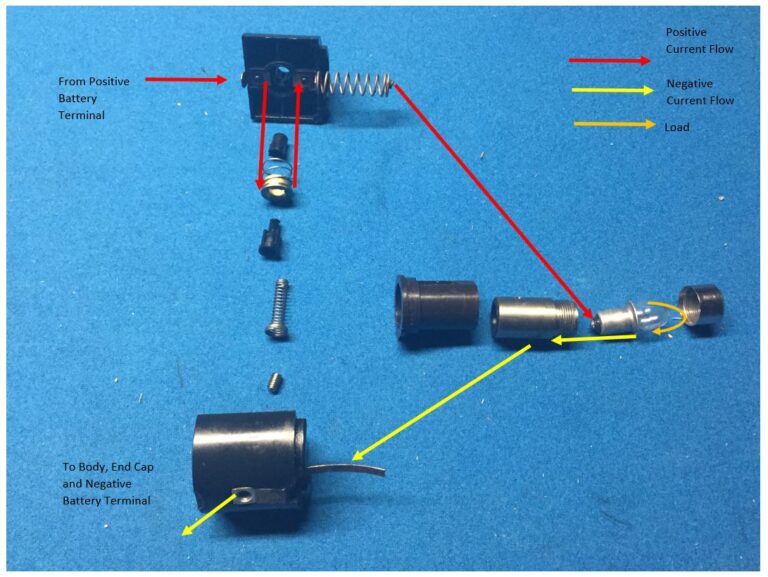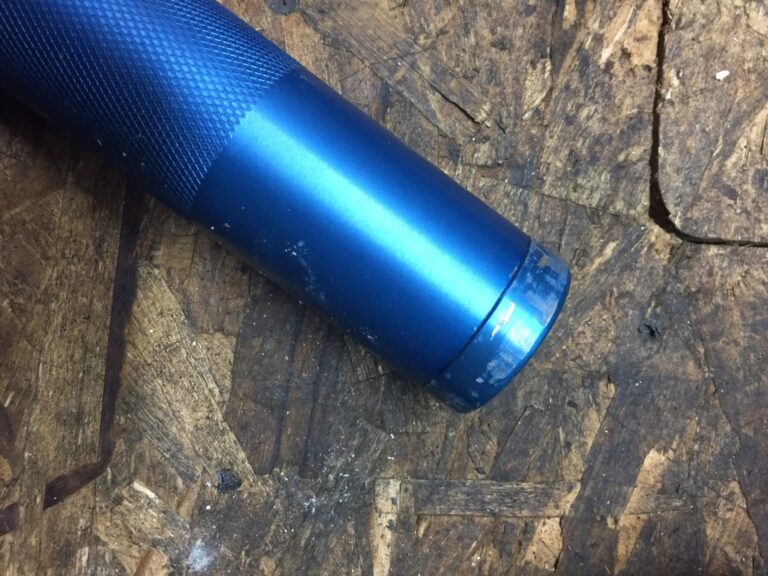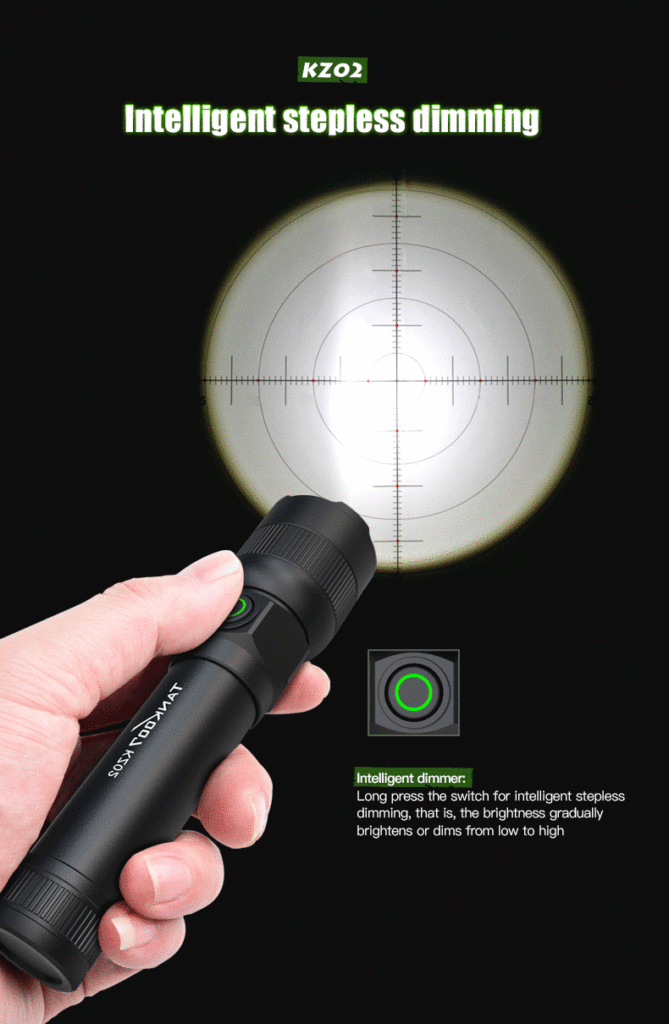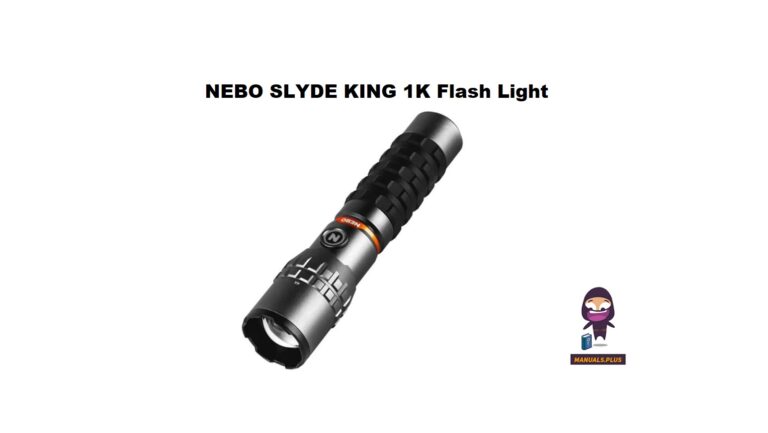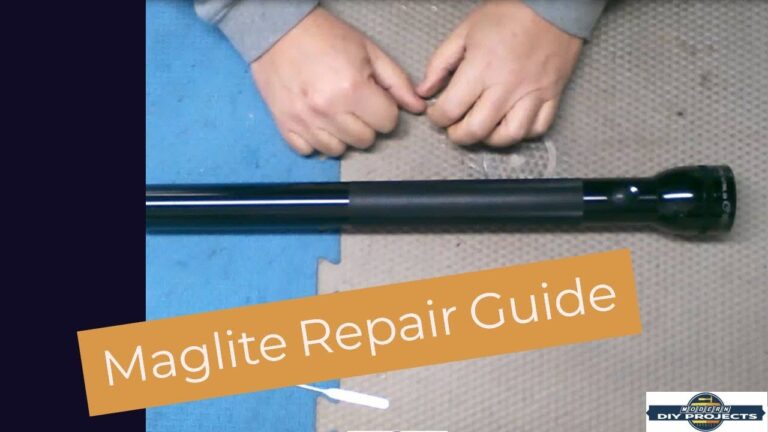Flashlight Battery Types Guide: Choosing the Right Battery
In the world of flashlights, the type of battery you choose can significantly impact performance, brightness, and longevity. With various options available, including alkaline, lithium-ion, and rechargeable batteries, understanding the differences is essential for users seeking optimal results.
This article will provide a comprehensive guide on the different battery types suitable for flashlights, their advantages and disadvantages, and tips on selecting the best option for your specific needs. Whether you’re an outdoor enthusiast, a tactical user, or someone in need of a reliable everyday carry flashlight, this guide will help you navigate the array of choices and make informed decisions.
Table of Contents
- Understanding Flashlight Batteries
- Alkaline Batteries
- Lithium-Ion Batteries
- Nickel-Metal Hydride (NiMH) Batteries
- Specialty Batteries for Flashlights
- Choosing the Right Battery for Your Flashlight
- FAQ
- Conclusion
Understanding Flashlight Batteries
Batteries play a fundamental role in flashlight performance, especially in terms of brightness and longevity. They are the power source that fuels the light output, and their specifications can directly influence a flashlight’s usability in various situations.
Understanding the key components of a flashlight and how batteries function is essential for selecting the right type.
Components of a Flashlight
A typical flashlight comprises several components: the light source (usually an LED), the reflector, the lens, and the battery. The light source converts the electrical energy from the battery into visible light.
The reflector focuses and directs the beam, while the lens protects the light source and shapes the output.
How Batteries Impact Performance
The battery’s voltage and capacity determine how much power is available for the light source. Higher voltage can lead to brighter output, but the overall performance is also influenced by the battery’s chemistry.
For instance, lithium batteries typically provide a higher voltage and longer runtime compared to alkaline batteries.
Types of Battery Technologies
There are several common types of batteries used in flashlights:
- Alkaline Batteries
- Lithium-Ion Batteries
- Nickel-Metal Hydride (NiMH) Batteries
- Specialty Batteries (e.g., CR123A, 18650)
| Battery Type | Voltage (V) | Capacity (mAh) | Weight (g) |
|---|---|---|---|
| Alkaline AA | 1.5 | 2000-3000 | 30 |
| Lithium-Ion 18650 | 3.7 | 1800-3500 | 45 |
| NiMH AA | 1.2 | 600-2800 | 30 |
| CR123A Lithium | 3.0 | 1500 | 17 |
This table illustrates the differences in voltage, capacity, and weight among the various battery types commonly found in flashlights. Alkaline AA batteries are widely used due to their availability and cost-effectiveness, but their performance in high-drain devices can be disappointing.
Lithium-Ion 18650 batteries are increasingly popular for their high capacity and lightweight design, making them suitable for high-performance flashlights. NiMH batteries offer a rechargeable option with good capacity but typically lower performance.
CR123A lithium batteries are compact and powerful, suitable for tactical flashlights.
Alkaline Batteries
Alkaline batteries are among the most common battery types used in flashlights. They are inexpensive and readily available, making them a popular choice for casual users.
Alkaline batteries work well for devices that require low to moderate power.
Advantages of Alkaline Batteries
- Cost-effective and widely available.
- Good shelf life, retaining charge for several years.
- Stable voltage output until depleted.
Disadvantages of Alkaline Batteries
- Lower performance in high-drain devices.
- Not rechargeable, leading to more waste.
- Prone to leakage if left in devices for extended periods.
Best Uses for Alkaline Batteries
Alkaline batteries are suitable for flashlights used occasionally or in low-drain applications. They are ideal for household use, children’s toys, and remote controls, but should be avoided for high-intensity or tactical flashlights.
| Performance Metric | Alkaline AA | Lithium AA |
|---|---|---|
| Typical Lifespan (hours) | 3-5 | 10-15 |
| Cost (per battery) | ~$0.50 | ~$1.50 |
| Best for | Low-drain devices | High-drain devices |
The comparison table highlights the performance of alkaline AA batteries against lithium AA batteries. While alkaline batteries are cheaper, they have a significantly shorter lifespan in high-drain applications.
In contrast, lithium batteries, though more expensive, offer much longer runtimes and better performance in demanding devices. Users should consider the type of flashlight they have and the frequency of use when deciding between these two battery types.
Lithium-Ion Batteries
Lithium-Ion (Li-ion) batteries have gained immense popularity in recent years for flashlight applications due to their high energy density and rechargeability. They are favored for high-performance flashlights, including those used in tactical situations and outdoor adventures.
Benefits of Lithium-Ion Batteries
- High energy density, offering longer runtimes.
- Lightweight and compact design.
- Rechargeable, leading to cost savings over time.
- Excellent performance in extreme temperatures.
Safety and Usage Guidelines
While lithium-ion batteries are generally safe, users should follow certain precautions. It is essential to use compatible chargers and avoid exposing batteries to extreme temperatures.
Overcharging can lead to overheating, so it is crucial to monitor charging cycles.
Recommended Lithium-Ion Options
Popular lithium-ion batteries for flashlights include the 18650, 21700, and CR123A formats. Each of these batteries has unique characteristics that make them suitable for different types of flashlights.
| Battery Type | Capacity (mAh) | Voltage (V) | Recharge Cycles |
|---|---|---|---|
| 18650 | 1800-3500 | 3.7 | 500-1000 |
| 21700 | 3000-5000 | 3.7 | 500-1000 |
| CR123A | 1500 | 3.0 | Not rechargeable |
This table underscores the various lithium-ion battery types commonly utilized in flashlights. The 18650 and 21700 batteries are popular for their high capacities and rechargeability, making them ideal for high-performance applications.
In contrast, CR123A lithium batteries, while powerful, are typically non-rechargeable, which may not be suitable for users looking for sustainability. When choosing a battery, it is essential to consider the specific requirements of your flashlight and its intended use.
Nickel-Metal Hydride (NiMH) Batteries
Nickel-Metal Hydride (NiMH) batteries are primarily used as a rechargeable alternative to alkaline batteries. They are known for their eco-friendliness and are a popular choice among environmentally conscious users.
Advantages of NiMH Batteries
- Rechargeable and available in various sizes.
- Higher capacity than alkaline batteries.
- Lower self-discharge rates than NiCd batteries.
Disadvantages of NiMH Batteries
- Higher self-discharge rates than lithium batteries.
- May require frequent recharging for high-drain devices.
Ideal Applications for NiMH Batteries
NiMH batteries are best suited for flashlights that are used frequently or for extended periods. Their capacity makes them ideal for devices that require a stable power supply without the need for constant replacements.
| Performance Metric | NiMH | Alkaline |
|---|---|---|
| Typical Lifespan (hours) | 4-8 | 3-5 |
| Cost (per battery) | ~$1.00 | ~$0.50 |
| Best for | Frequent use | Infrequent use |
The comparison table highlights the performance differences between NiMH and alkaline batteries. NiMH batteries offer a longer lifespan and can be recharged multiple times, making them a more sustainable option.
Although they may cost more upfront, their long-term use can lead to significant savings. For users who rely heavily on their flashlights, NiMH batteries can provide reliable power without the waste associated with disposable alkaline batteries.
Specialty Batteries for Flashlights
Specialty batteries, such as CR123A and 18650, are designed for high-performance flashlights, offering unique characteristics that set them apart from standard battery types.
Overview of Specialty Battery Types
Specialty batteries are often used in tactical and high-output flashlights. CR123A batteries are compact and lightweight, making them ideal for portable flashlights, while 18650 batteries provide a larger capacity for extended use.
Advantages of Using Specialty Batteries
- High energy density, providing longer runtimes.
- Compact designs, suitable for small devices.
- Rechargeable options available for sustainability.
Popular Brands and Recommendations
Some well-known brands for specialty batteries include Panasonic, Samsung, Sony, and LG. These manufacturers produce high-quality lithium-ion batteries that are commonly recommended for flashlight use.
| Battery Type | Brand | Capacity (mAh) | Voltage (V) |
|---|---|---|---|
| CR123A | Energizer | 1500 | 3.0 |
| 18650 | Panasonic NCR18650B | 3400 | 3.7 |
| 21700 | Samsung INR21700 50E | 5000 | 3.7 |
This table showcases a variety of specialty batteries that are highly regarded in the flashlight community. The CR123A battery is particularly valuable for its compact size and high output, making it a favorite in tactical applications.
Meanwhile, the 18650 and 21700 batteries stand out for their high capacities and rechargeability, providing longer runtimes that are essential for demanding situations. Users should choose the battery type that best aligns with their flashlight’s design and intended use.
Choosing the Right Battery for Your Flashlight
Selecting the appropriate battery for your flashlight is crucial for achieving optimal performance and longevity. Various factors come into play when deciding which battery type is best for your specific needs.
Factors to Consider in Battery Selection
- Usage frequency: Determine how often you’ll use the flashlight.
- Light output: Assess the brightness you require for your tasks.
- Environmental conditions: Consider temperature and moisture levels where you’ll be using the flashlight.
Matching Battery Type to Flashlight Use
For everyday carry flashlights, alkaline or NiMH batteries may suffice due to their availability and cost-effectiveness. For tactical or high-performance flashlights, lithium-ion batteries like 18650 or 21700 are recommended for their superior output and longevity.
Common Mistakes to Avoid
- Using incompatible battery types: Always check your flashlight’s specifications.
- Ignoring battery maintenance: Properly store and handle batteries to extend life.
- Overlooking discharge rates: High-drain devices need batteries capable of delivering consistent power.
| Consideration | Alkaline | NiMH | Lithium-Ion |
|---|---|---|---|
| Cost | Low | Moderate | High |
| Rechargeable | No | Yes | Yes |
| Best for | Low-drain devices | Frequent use | High-drain devices |
This comparison table provides a quick overview of the considerations for selecting flashlight batteries. While alkaline batteries are the most affordable option, they are not rechargeable and may not perform well in high-demand situations.
NiMH batteries provide a middle ground with rechargeability and decent capacity, while lithium-ion batteries excel in high-drain devices, albeit at a higher cost. It is essential to align your choice with the flashlight’s intended use and your specific needs.
FAQ
- What type of battery is best for outdoor flashlights?
For outdoor flashlights, lithium-ion batteries are often the best choice due to their high energy density, longer runtimes, and performance in extreme temperatures. They provide consistent brightness and are rechargeable, making them cost-effective for frequent use. - Can I use rechargeable batteries in my flashlight?
Many flashlights are compatible with rechargeable batteries, particularly lithium-ion or nickel-metal hydride (NiMH) types. Always check your flashlight’s specifications to ensure compatibility and optimal performance. - How do I know when my flashlight battery is dead?
Signs that your flashlight battery may be dead include dimming light output, flickering, or the flashlight not turning on at all. For rechargeable batteries, you may also notice that they no longer hold a charge effectively. - What is the difference between lithium and alkaline batteries?
Lithium batteries provide higher voltage and longer runtimes compared to alkaline batteries. They perform better in high-drain devices, are typically rechargeable, and have a longer shelf life, making them ideal for emergency flashlights. - How should I store flashlight batteries for optimal lifespan?
Store batteries in a cool, dry place to prevent degradation. Avoid exposing them to extreme temperatures or humidity, and ensure that they are not fully discharged before storing them for extended periods.
Conclusion
In conclusion, selecting the right battery for your flashlight is crucial for achieving optimal performance and longevity. By understanding the various battery types, their advantages and disadvantages, and how they align with your specific needs, you can ensure your flashlight operates efficiently.
Whether you choose alkaline, lithium-ion, or NiMH batteries, keeping in mind the intended usage will help you make informed decisions and empower you to illuminate your path whenever necessary.

